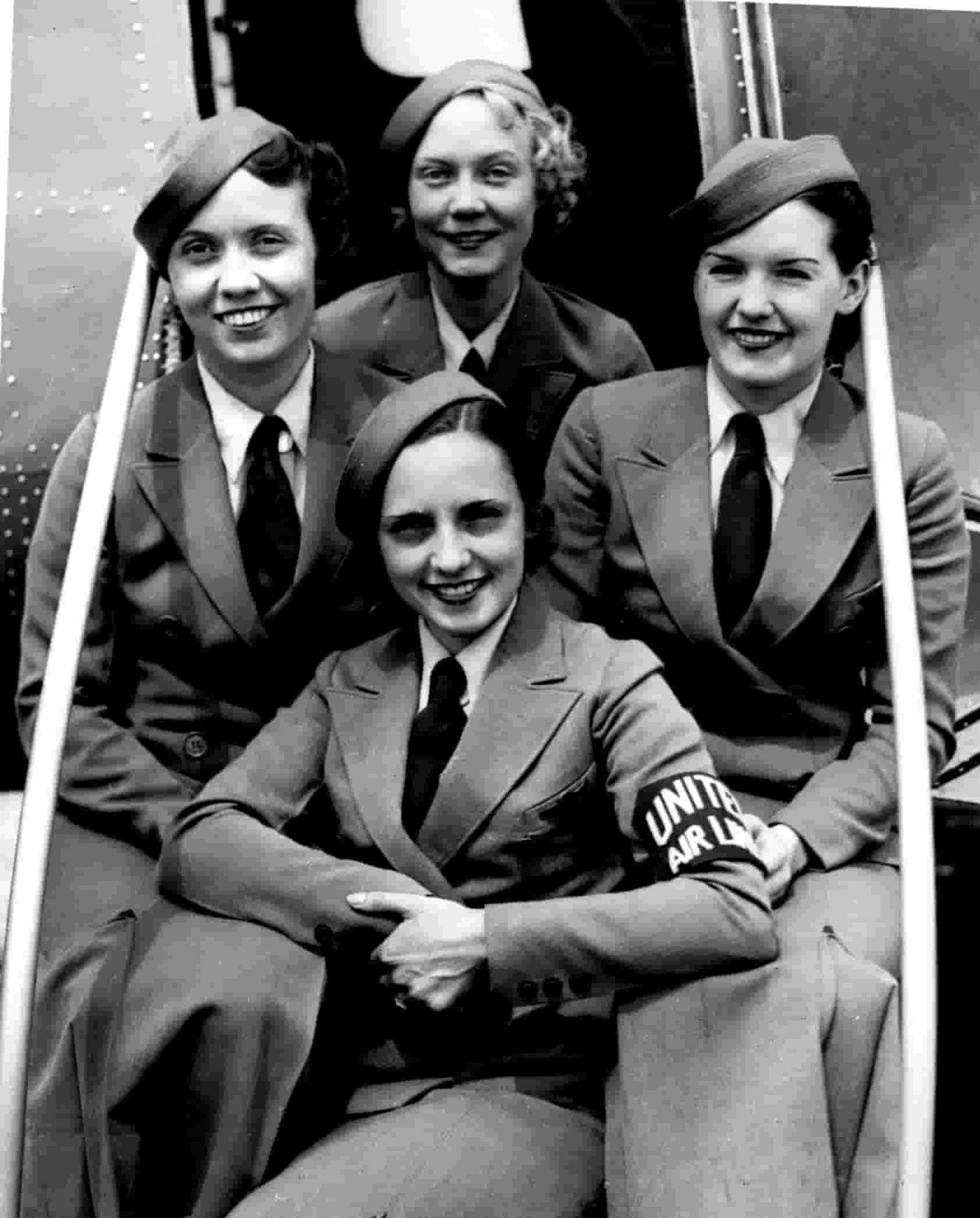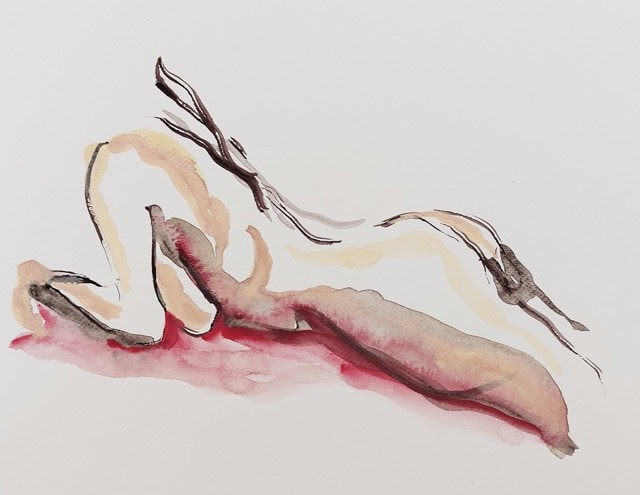This is our first collaboration with Napi Történelmi Forrás. The editors of this magazine are historians with the aim of capturing the atmosphere of centuries past through their articles.
With the spread of civil air travel it was not only the passengers who won, but women too – a (job) opportunity. As this new form of travel took root, flight attendants appeared on board as well, and by the 1930s they were exclusively young and attractive ladies speaking several languages.
They were well-paid and much more fortunate than their typist or secretary peers, becoming the “hostesses” of the airlines. If needed, they poured whisky, they navigated with a cartographer’s precision at a height of 3000 metres, or they provided pleasant company during long flights. They were the sky girls.
“There’s no denying it, even in flying, the ladies have taught men that women are indispensable.” Ratio of flying with or without stewardesses: exactly 1000 to 1. Rotterdam —Vienna, 1937. Miklós Horthy Jr.”[1]
Until the 1930s the profession of stewardess was linked not to air travel but to maritime navigation: they first appeared on large ocean cruisers as attendants and waitresses, ensuring comforts for passengers.
However, with the appearance of charter services and the shortening of travel times, an increasing number of passengers switched to air travel, so it became necessary to expand the staff on board airplanes. In the 1930s, airlines all over the world had female flight attendants on their flights, whose job description, besides serving food and drinks and giving help, sometimes also included entertaining passengers.
The first stewardess school in Europe was founded in the Netherlands,
while later on similar institutions were opened in London and Stockholm as well. And what did the “flying-nurses” learn? Firstly, they had to familiarise themselves with airplanes, learn about aeronautical maps, directions, altitude, and everything else that might come in handy during flying. With no embedded screens in the seats, these helping ladies were the only channels of information.
They also needed to be skilled at first aid: it was not by chance that in the early days it was mainly professional nurses who were employed as stewardesses.

“For instance, my stewardess always kept me informed about where we were flying through, what altitude we were at, she told me the names of the rivers, towns and mountains that we flew over and the speed of our airplane at a given moment. Stewardesses need to complete Red Cross training too as they nurse passengers if they get airsick; they serve refreshments, and if necessary, reassure and encourage passengers.”[2]
The American Ellen Church is known to be the first female flight attendant,
who first stepped on board as a “flight nurse” in 1930. Although it was American airlines (Delta Air Lines, United Airlines, American Airlines, etc.) that first placed female flight attendants in regular service (141 stewardesses were working on 345 American passenger airplanes by 1938 [3]), we Europeans were not lagging behind for long either.
Upon seeing their success in America, British, Swiss and Dutch flights soon introduced these jobs at the onset of the 1930s. The first European female flight attendant was Nelly Diener, who was known as “the Angel of the Skies” (in German Engel der Lüfte). In 1934, a few weeks after her first flight, Diener died in an airplane crash.

This new profession became quite popular, but the many applicants were thoroughly screened:
firstly you needed to be in a good physical condition, secondly applicants whose stomach and nervous system could handle air travel without a problem were prioritised, since looking after passengers would be one of their main tasks in the air. Don’t forget, stewardesses at that time did not serve on jet planes with all the modern conveniences available today.
External physical impacts, such as turbulence, were felt much more strongly in the cabins than today, not to mention noise levels and temperature.
“I might have looked a bit pale as the stewardess, a very nice, young girl in a nurse’s uniform, none other than the famous Annamarie of Swissair, who, I later learned, spent six to eight hours a day in the air, asked me:
– You haven’t ever flown before?
– No.
The young lady then fastened my seat belt and sat next to me. They pay special attention to such first-flyers, they wouldn’t like them to mess the plane up. Annamarie ordered me to drink some whisky before taking off, which really helped boost my courage.”[4]
– wrote the Hungarian journalist Imre Békessy about his first flight and the Swiss flight attendant. Besides physical fitness only attractive, well-dressed and young women were employed.
Anyone taller than 165 cm and weighing more than 65 kg, barely had a chance to pass the suitability criteria.
This was important because they tried to load the airplane as little as possible, and shorter women moved around more easily in the low cabins too.[5] Besides pragmatic aspects like these, aesthetics also dominated the selection criteria of course: the ideal woman of the age was not the plump Gibson girl any more, but the slender girl.
Furthermore, high language proficiency was a must, the ladies had to master at least three languages, but at least one global language, such as German, English or French. Since highly educated (high-school or even university graduate) women were generally employed, this latter criteria was not such a difficult issue, but it proved to be an excellent filter during the selection process.

In addition to all this, “an air hostess [stewardess] serves tea, coffee, sandwiches, and fruits. However, if a passenger decides to invite her for a cup of tea, for instance, she has to respond “perhaps”, which in this case means “no”.[6]
Women of noble birth often decided to become air-hostesses before getting married.
This was an opportunity they could use. An opportunity to pursue the most modern of careers available for women, to travel, achieve some degree of freedom or make new acquaintances. American stewardesses were later so good at this that the majority of them married the pilot soon after starting their air career, though after the wedding, airlines rarely approved of the ladies staying on.
“ […] the blue-eyed Lou Van der Meulen and the Swiss Henriette Paxhe declared that they prefer serving in the air much more than at home, and they value their well-paid and versatile jobs more than the insecurities of marriage. America is a different matter entirely, just last week six stewardesses got married from one airline alone, and to six pilots.”[7]
By the 1930s, Hungary had its fair share of European air travel too.
English and Italian air traffic companies established London-Budapest and Rome-Budapest flights in 1935. And from 1939 MALÉRT (Hungarian Air Traffic Ltd.) launched daily flights to big European cities, primarily to Venice, Rome, Milan, Vienna, Salzburg, Munich, Zurich, Berlin, Krakow and Warsaw. In 1937 flight attendants served passengers on the Budapest-Prague flights:
“On both the outbound and the inbound flights, the stewardess was a remarkably attractive young girl (brunette on the way out, blonde on the way back). She wore a well-tailored dark-blue uniform comprising of a blazer, a skirt and a small white cap. A stewardess speaks all languages and her job is to make the journey pleasant.
She puts pillows under the heads of those suffering, provides them with a map, twists the ventilation knob, serves tea and coffee, and asks every 10 minutes if you are doing fine.[…] These young ladies fulfil their tasks with such love and attention that each passenger is convinced this warm interest is based on personal sympathy (even more so since the young women are not allowed to accept money).” [8]

However, these nice, attentive ladies only started to appear on MALÉRT flights after 1939, before that Hungarian passengers could only meet them on foreign flights.
“One of the stewardesses was Marcella Weiss, the daughter of our colleague, assistant pharmacist Gusztáv C. Weiss […] Our comrade’s daughter provides stewardess services on the Budapest-Rome route and then on the Rome-Venice-Budapest-Warsaw-Gdynia route, together with a countess. Marcella Weiss was selected for this assignment mainly because of her extensive language skills.”[9]

At the dawn of air travel, just like today, company uniforms stipulated by airlines were an obligatory accessory that were different for each company and each country.
However the combination of skirt and tights was a common element everywhere. While the employees of Dutch KLM stepped on board in dark-blue blazers, with matching jaunty caps, Swissair stewardesses, who were the first to wear a uniform, flew into the sky in dark-coloured berets and characteristic striped bowties.
So these sky girls with their fixed salaries served as chambermaids, priests, best friends and spokespeople all at the same time, even more so since there were hardly any other instructors who could guide and advise passengers during flights who were often not used to flying.

While women were squeezed out of the profession of passenger aircraft pilots completely, they dominated the on-board service staff without exception. Why, you ask? The Pesti Hírlap (popular Hungarian journal between 1841-1944) journalist has the answer:
“Because only women have the inherent combination of vigour, determination, discretion and skill that merge into the combined magic of serenity, a smile and pleasant reassurance shown towards the outside. The passengers of an airplane, whether they admit it or not, are always a bit worried, and a smile from the flight attendant is capable of soothing them more than the objective security of the pilot.”[10]
Notes and references
[1] Written by the governor’s younger son into the memorial book of flight attendant Charlotte Dvorah Újság, No. 97, Vol. 14, 1 May 1938, p. 27
[2] Ibid.
[3] Pesti Hírlap, No. 204, Vol. 61, 7 September 1939, p. 9
[4]Újság, No. 103, Vol. 14, 8 May 1938, p. 13
[5] Egy légi-háziasszony, “air-stewardess” beszámolója. Pesti Napló, No. 224, Vol. 89, 30 October 1938, p. 32
[6] Ibid.
[7] Pesti Napló, No. 87, Vol. 88, 18 April 1937, p. 57
[8] Hatvany Lili karlsbadi levele. Színházi Élet No. 35, Year 1937, p. 24
[9] Gyógyszerészek Lapja, No. 9 Vol. 34, p. 15
[10] Pesti Hírlap, No. 88, Vol. 61, 19 April 1939, p. 9






